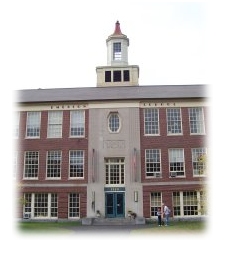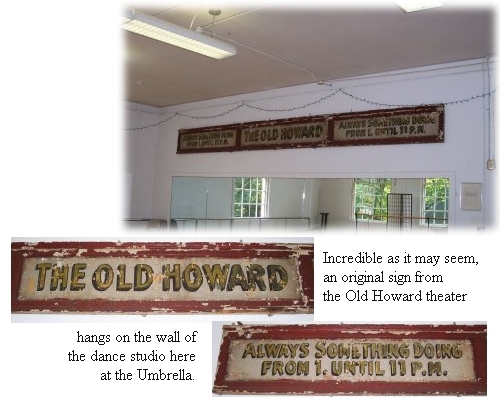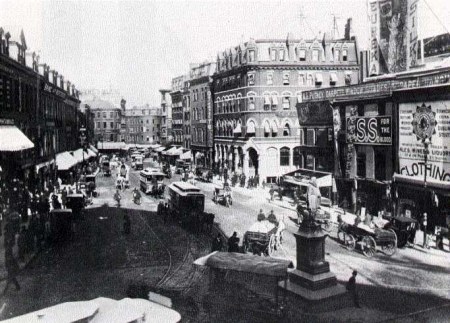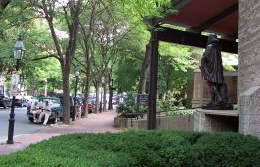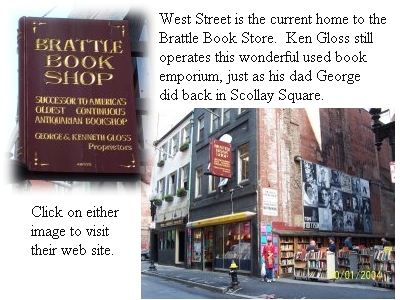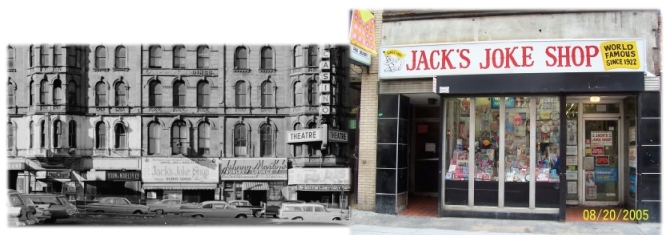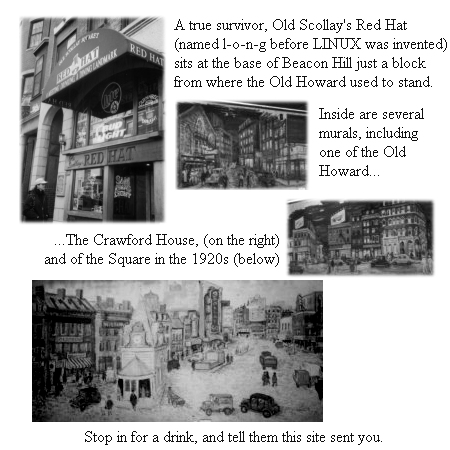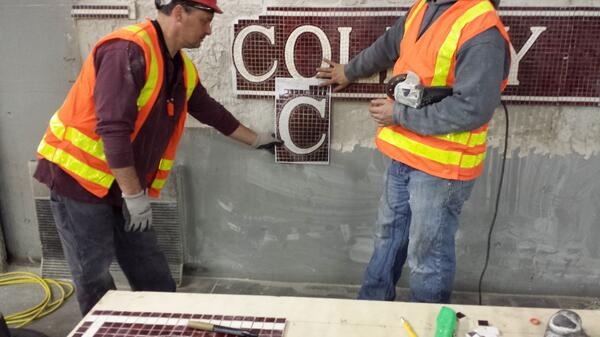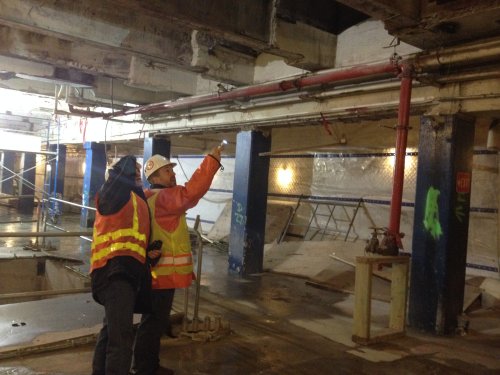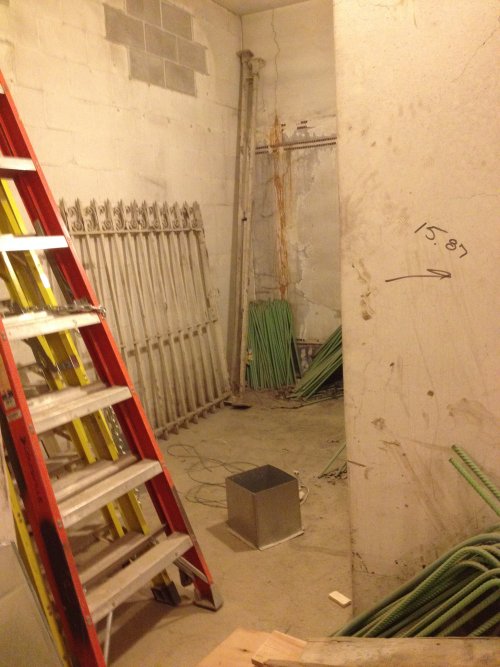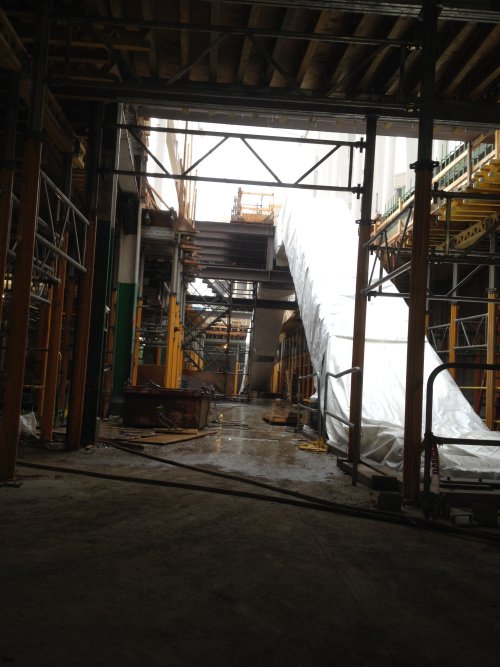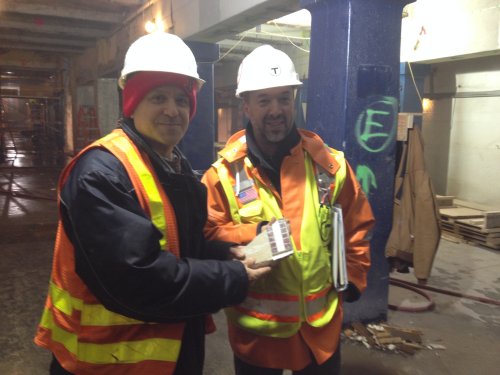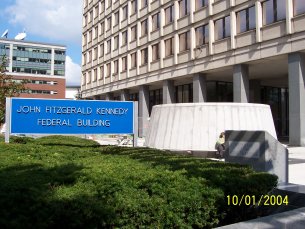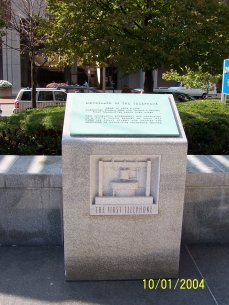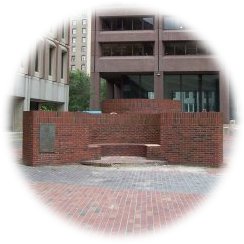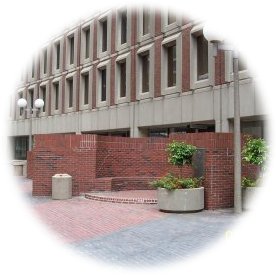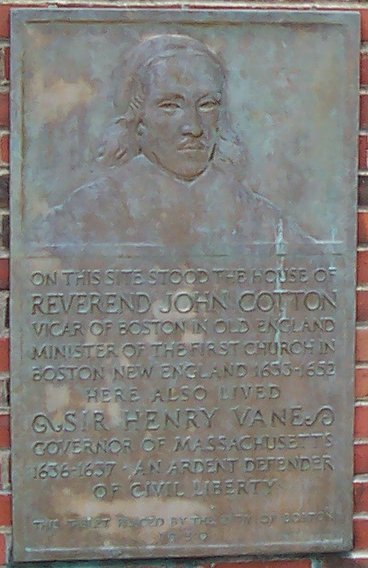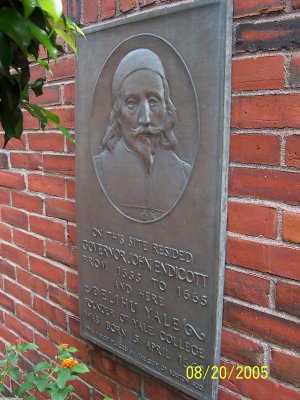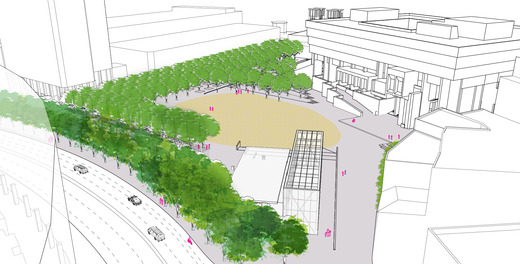Pieces of Scollay Square can still be found in Boston and the surrounding area today - if you know where to look...
On our left is the Emerson Umbrella on Stow Street in Concord, MA. The Umbrella is described on their web site as a "non-profit cultural organization committed to nurturing and encouraging the arts throughout the community." It is also where you can see a piece of Scollay Square history...
Now let's go into Boston for more remnants of Scollay Square. You can click on the map to visit a particular site,
or just scroll down the page to see them all, from the Back Bay to Scollay Square.

John Winthrop Statue
John Winthrop was the first Governor of Massachusetts, and the Deacon of the First Church of Boston. On September 17, 1880, the 250th anniversary of the founding of Boston, a statue was dedicated in Scollay Square to Governor Winthrop, at the intersection of Court and Tremont Streets. In 1898 the construction of the new subway system into the Square forced the statue further down Court Street. Six years later the construction of the East Boston line (today's Blue line) forced another move for the beleagured statue.
Like many of his Brahmin descendants, Governor Winthrop withdrew (was moved by the Boston Arts Commission) to the Back Bay, where he stands today, in front of the First and Second Church of Boston, at the intersection of Berkely and Marlboro Streets. Back to Map
Simpson's Loan Company
For decades Simpson's Loan Company anchored the head of Cornhill in Scollay Square. When the city demolished the area in 1961-2, Simpson's moved to Temple Place in Boston's so-called "Ladder District." So taken were the owners with the description of Simpson's in Always Something Doing, that they framed and hung several pages of the book in their store, for which we are both humbled and grateful. Back to Map
Brattle Book Store
Jack's Joke Shop
The owners of Jack's Joke Shop liked to claim theirs was was the first Joke Shop in America. It opened in 1922 on Hanover Street in Scollay Square and for years, until urban renewal forced them to move, counted as its neighbors the Casino Theater and the American House. Jack's moved several times, eventually settling on Tremont Street in the heart of Boston's Theater District where, until they closed for good in 2006, was where one could still peruse a wide selection of costumes, whoopee cushions, and fake dog-doo. Ahh, there's nothing like the classics! (Yes, I know that since the store has closed it should be removed from this page. But they did manage to hang in there for more than 45 years, which earns them a continued presence on this page.) Back to Map
The Red HatWe're just a block or two from our final destination. But first, we must stop
at a famous water hole from Scollay Square that still exists today
(in fact you can visit their great web site - just click here)...
We've arrived finally at Scollay Square. All around, above, and below Government Center and City Hall Plaza are remnants of the Square. Artist and blogger Sara Lovering posted photos of the original Scollay Square subway sign.
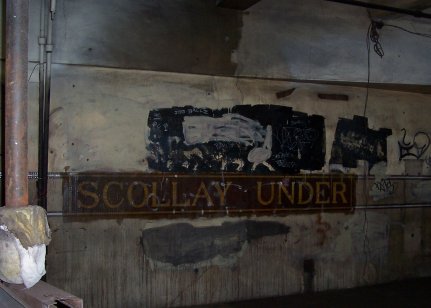
The Government Center Blue Line stop used to be known as
Scollay Under. This original mosaic still graces the wall of the
subway just beyond the current platform.
In March 2014 the Government Center at Scollay Square T stop was closed for a two-year renovation project, as explained here on the T website where you can also see a page filled with photos and videos of the project. As part of the project, the T is taking great pains to save the original Scollay Square mosaic signs, which will be restored and placed back on the walls of the new station.
Workers documenting the placement of a Scollay Square station mosaic before removal and storage
In November, 2014 I was invited to tour the site by Brian Howland, the Resident Engineer.
Brian showing David progress on the former "Scollay Under" station
Among the hidden treasures Brian and the construction crew found was this gate, from the original 1898 Scollay Square station
Work as of November 17th on what the Green Line level of the Government Center at Scollay Square station
Brad kindly gave me a souvenir - a piece of the original Scollay Under station mosaic. Very cool...
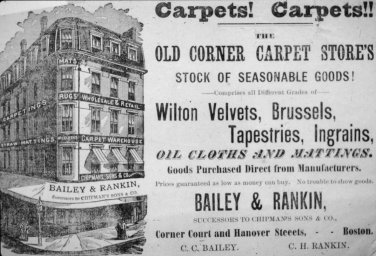
Built in 1843 by David Sears on Cornhill, a street carved into the city's landscape in 1816, it quickly became a magnet for businesses from carpet stores to restaurants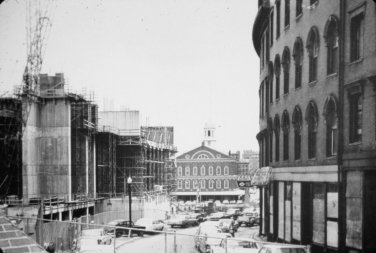
Not to mention great book stores, like the Brattle, which resisted eviction even as the new City Hall rose, as seen here in this 1963 photograph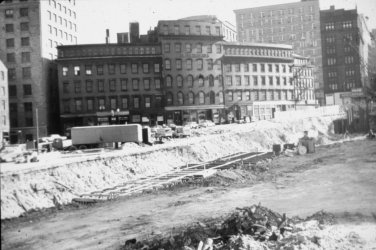
That the city would allow the Sears Crescent to remain is something of a miracle. Back then, the notion of saving old structures was scoffed at by planners and public alike. Here we see the excavation for the realigned Green line to Haymarket moving apace in 1963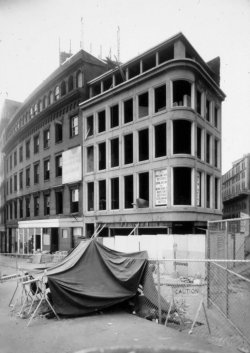
The Sears Crescent Building was gutted and rebuilt from the inside out.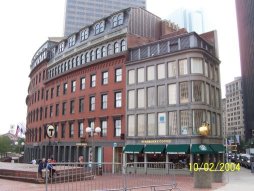
It stands today as a reminder of how easily we let so much of Boston's past fall to the wrecking ball, and of the folly that old buildings could not be made useful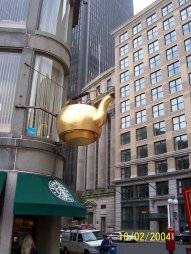
The famous tea kettle still steams today, though the store over which it hangs is best known for coffee, not tea. Back to Map
John Collins
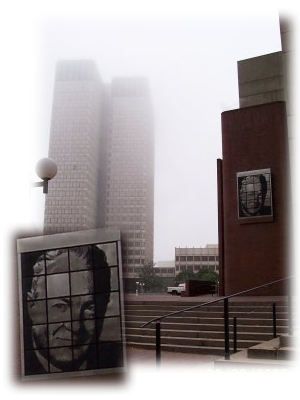
Mayor John Collins was as much responsible for the demise of Scollay Square as he was with the
resulting rebirth of Boston. It is fitting that his image grace the south side of Boston's City Hall, as we
can see in this view that also shows the JFK Federal Building across City Hall Plaza. Back to Map
In front of the JFK building's Cambridge Street entrance...
...is a marker which indicates the site where, in 1875, Alexander Graham Bell and Thomas Watson invented the telephone. Back to Map
Our last stop is Pemberton Square, located just up Beacon Hill from the Square,
and home to the gloriously refurbished John Adams Courthouse.
Pemberton Square is also a monument to the misguided architecture of the 1950s and 60s urban renewal era. Like these two things. They are someone's idea of benches. Ugh.
Attached to both of these so-called "benches" are plaques commemorating some of Pemberton Square's more notable residents, Minister John Cotton, Governors Henry Vane and John Endicott, and Yale founder Elihu Yale. Back to Map
Old Howard
Just behind 1 Center Plaza, here in Pemberton Square, is a plaque that marked
the site of the most popular destination in Boston - the stage of the Old Howard!
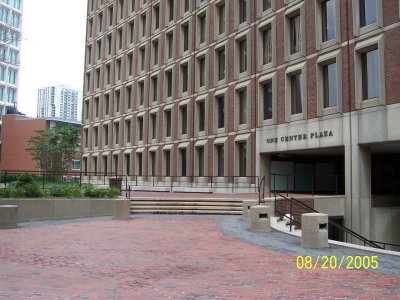
It is located here, on the northern side of Pemberton Square, near the entrance
from One Center Plaza. Just up those steps are11 concrete benches.
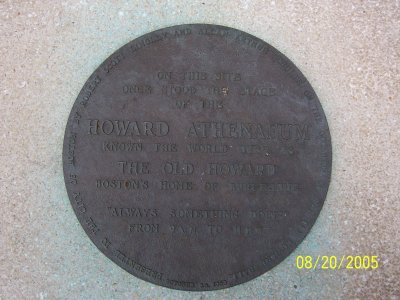
On the first bench is this plaque, placed there in 1968 by a group of
Old Howard devotees, among them Francis W. Hatch, the composer and
singer of "Some Coward Closed the Old Howard," which can be
heard by clicking on the link HERE.
So what's next for Scollay Square? The second edition of Always Something Doing included a chapter on the proposed re-redevelopment of the plaza, made public in the mid-1990s, which would include, among other additions, a redesigned subway station, a restaurant, and hotel. Save for a curved series of benches installed along Cambridge Street, nothing else has been done to improve this wretched excuse for a public space.
Home
The ideas for improving the plaza never seem to stop. In 2004 Mayor Menino floated his own idea, which was to sell City Hall to a developer and move the center of city government to the Seaport District. I liked the idea, and wrote a column about it in 2004 (it was never published but you can read here.) In 2011 the Boston Globe reported on a conference at Suffolk University on a "symposium on greening Government Center." You can read the article on the symposium here.
